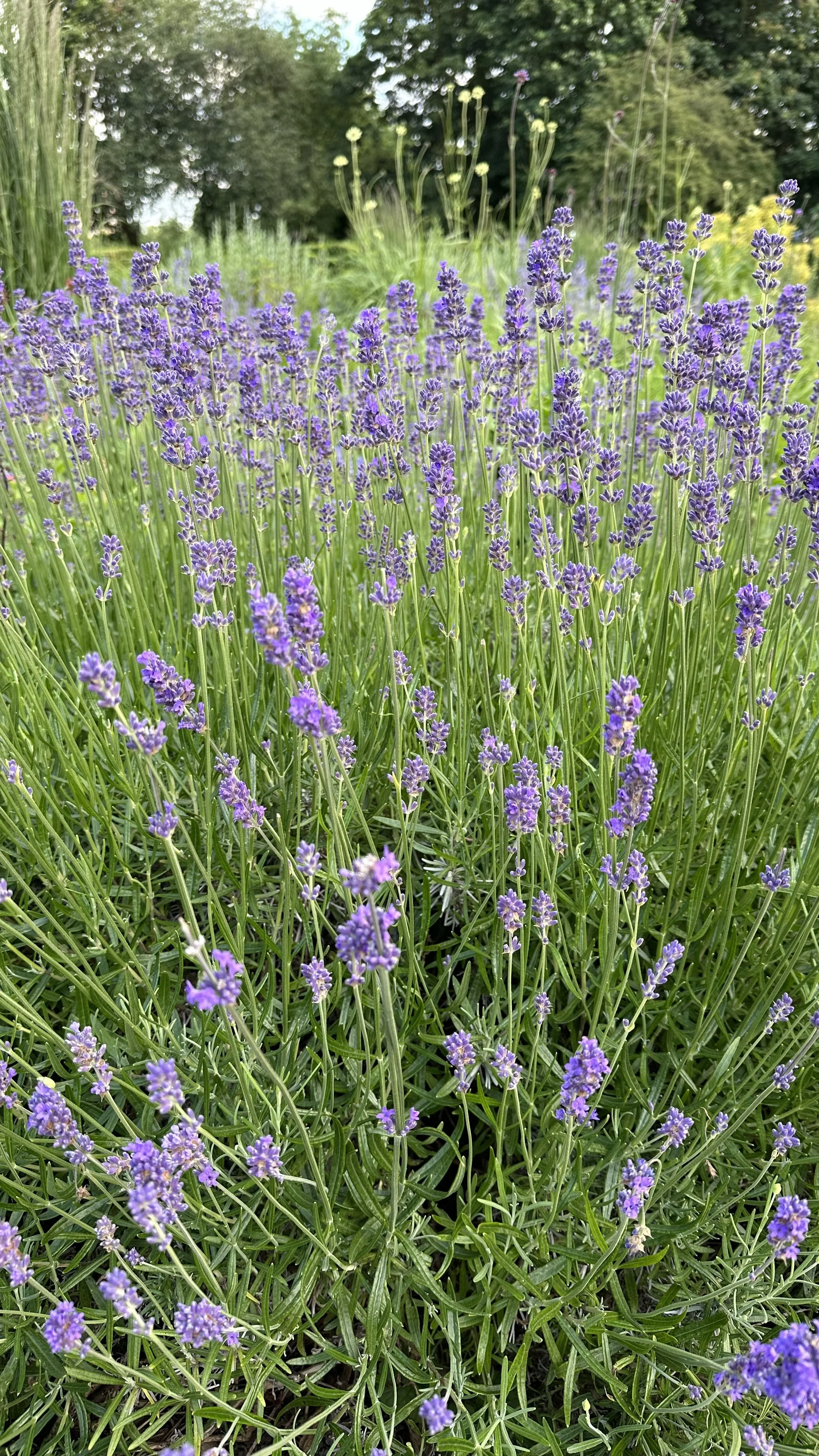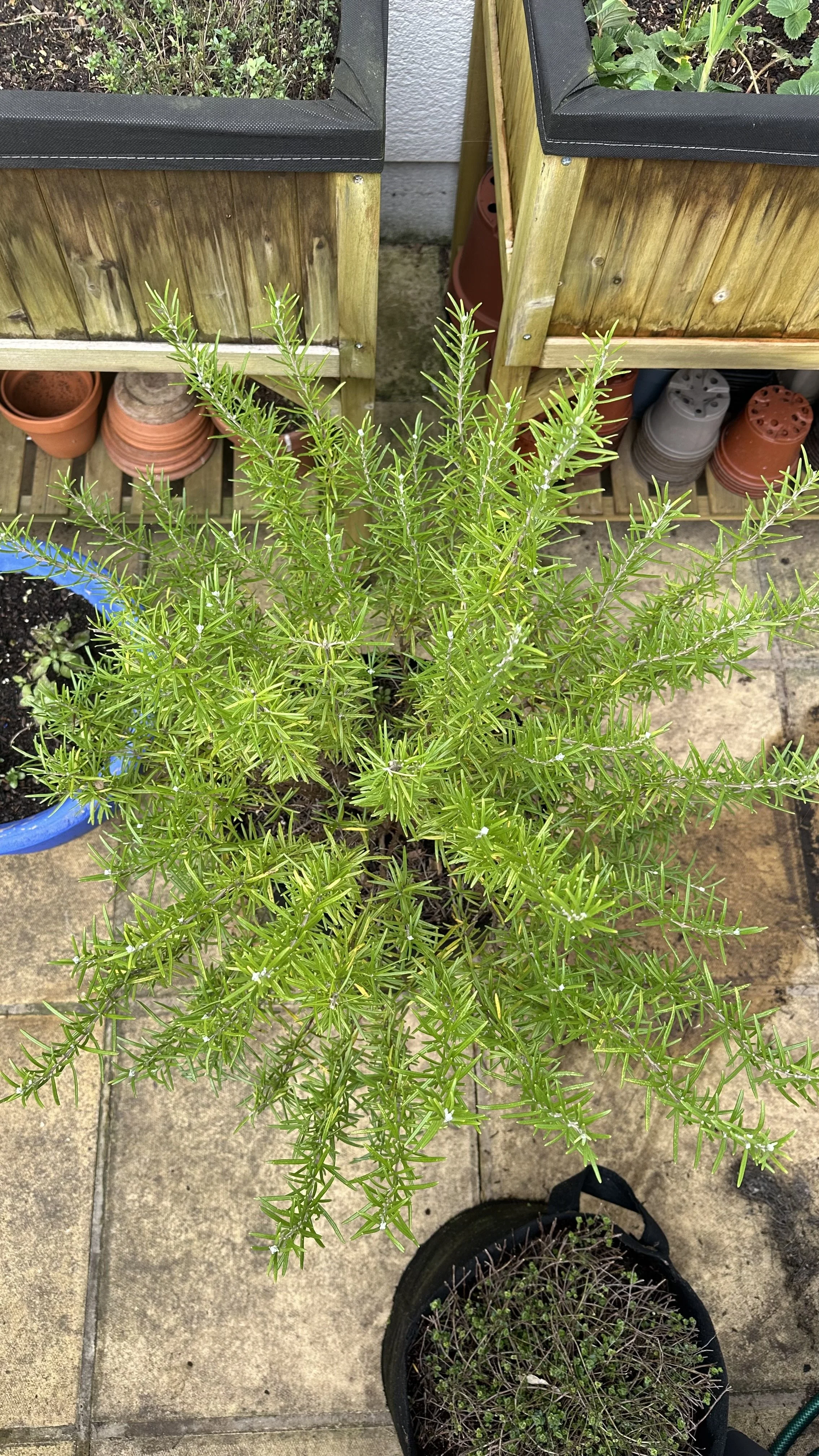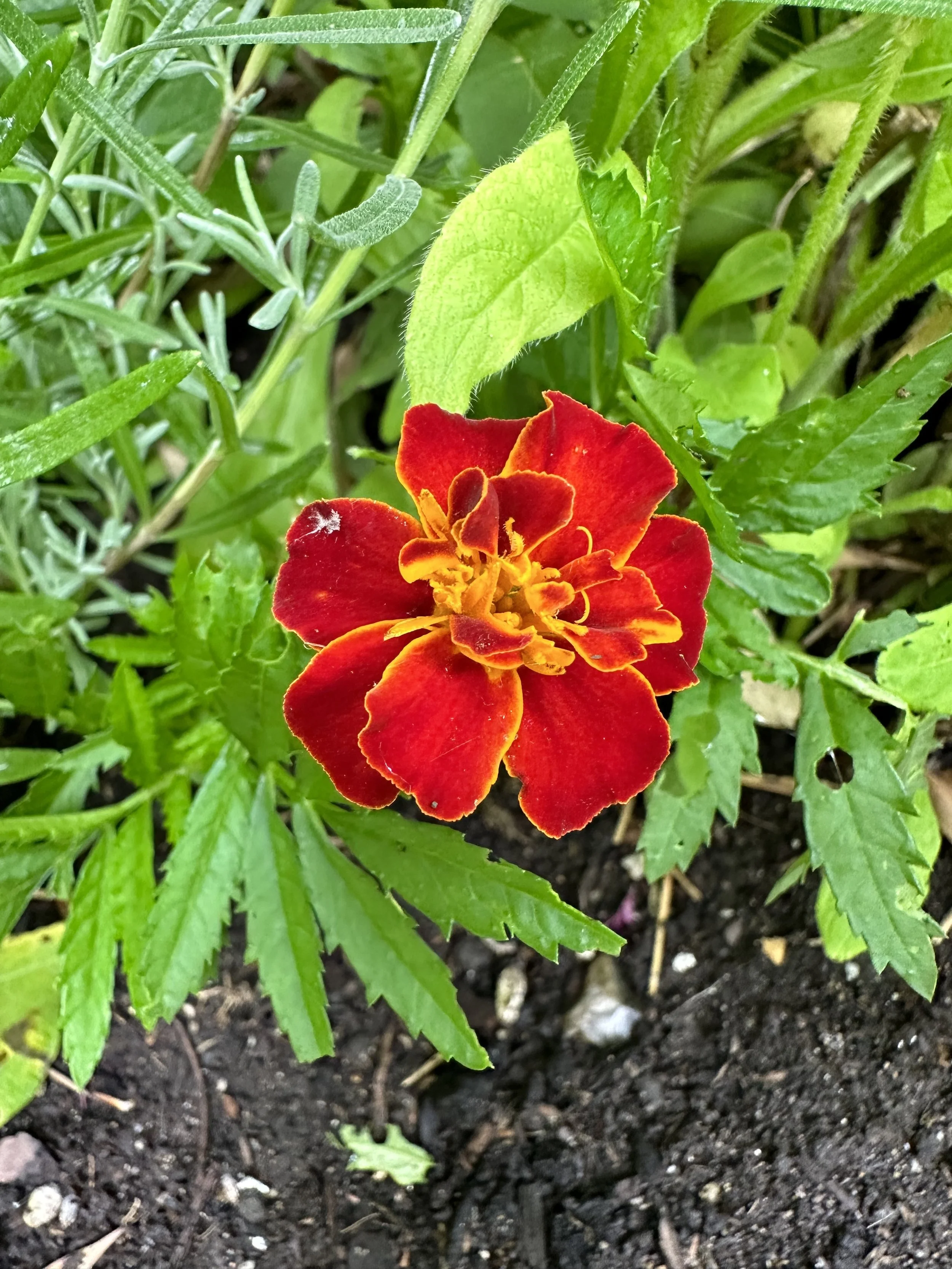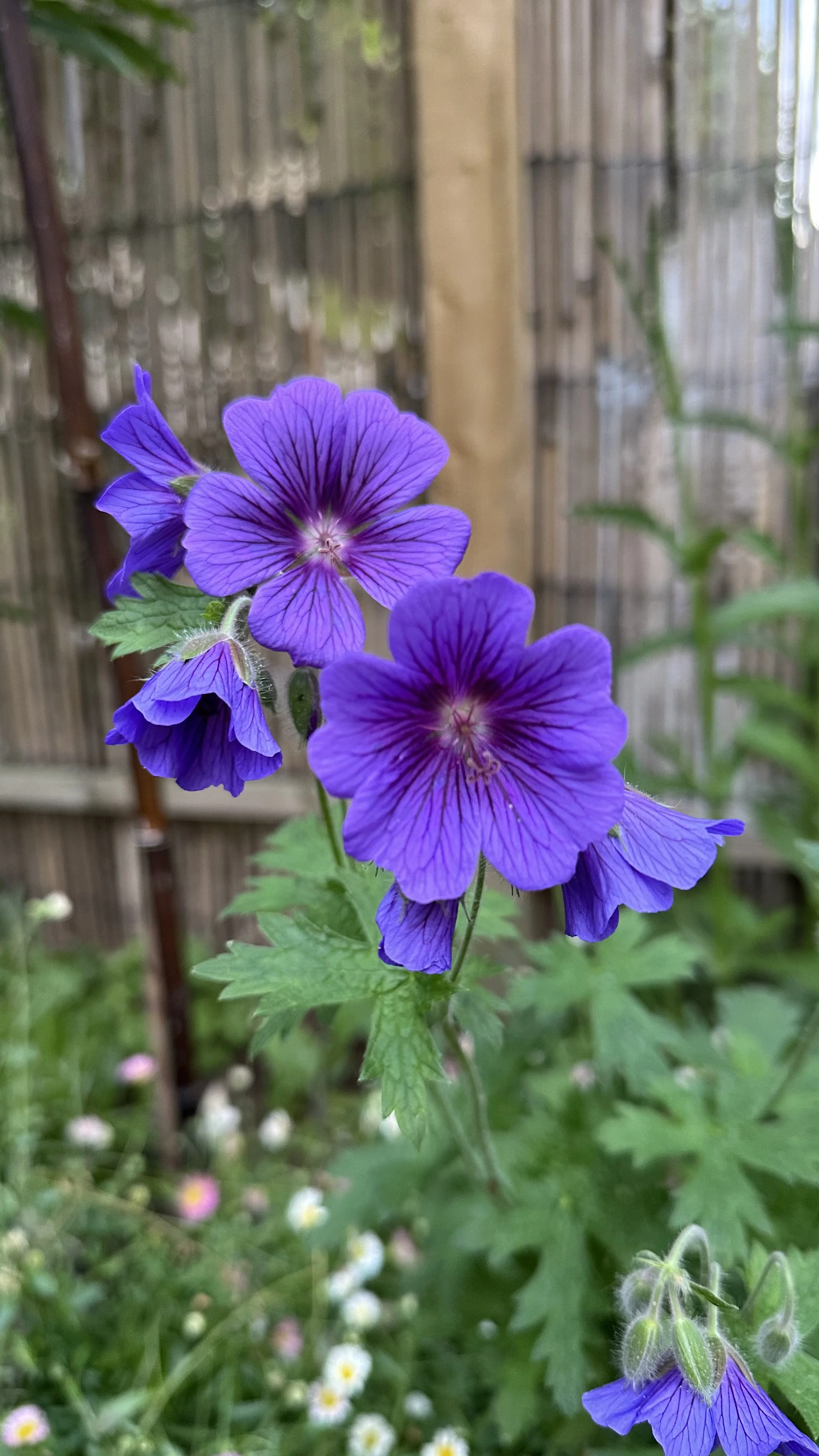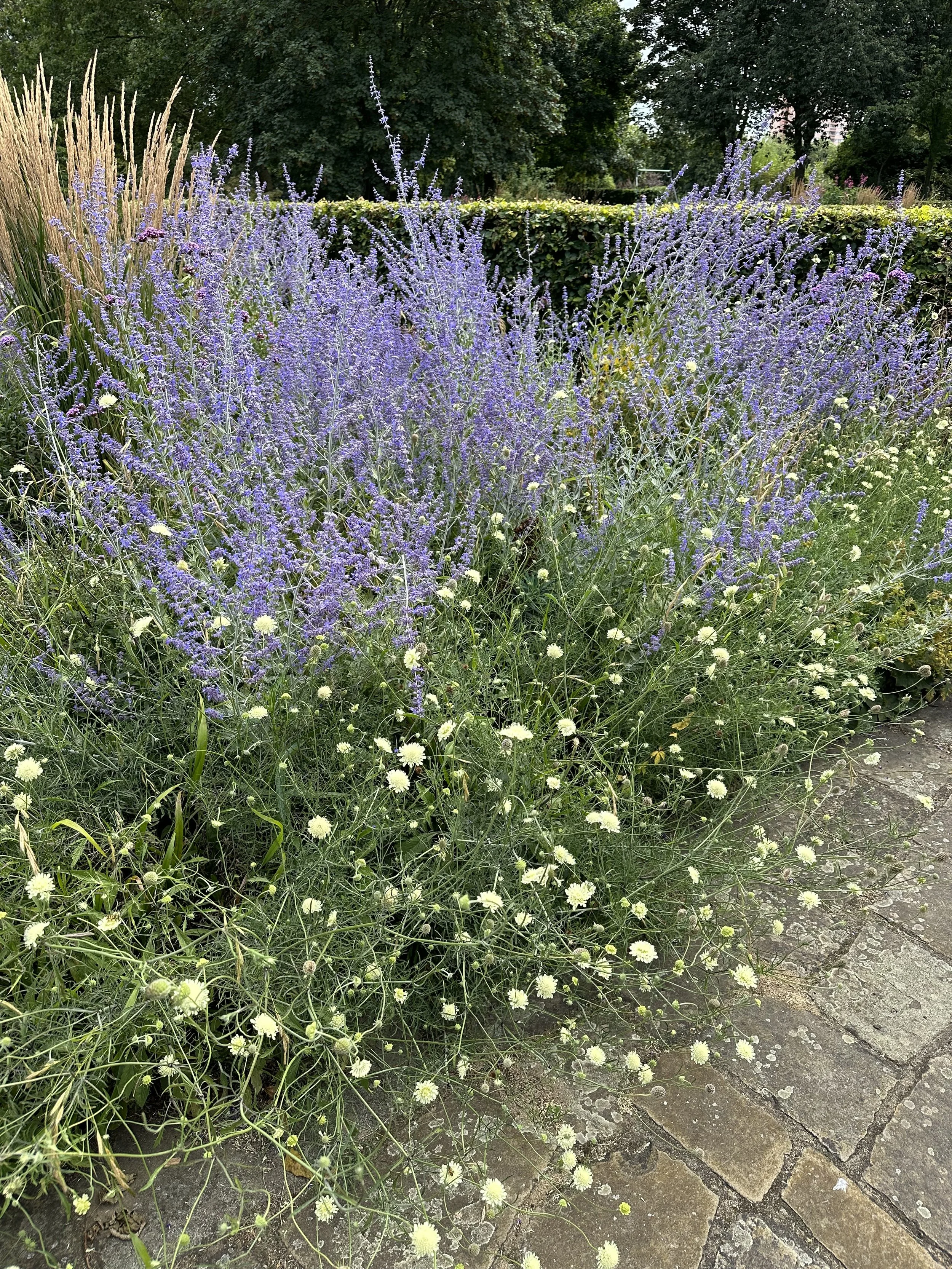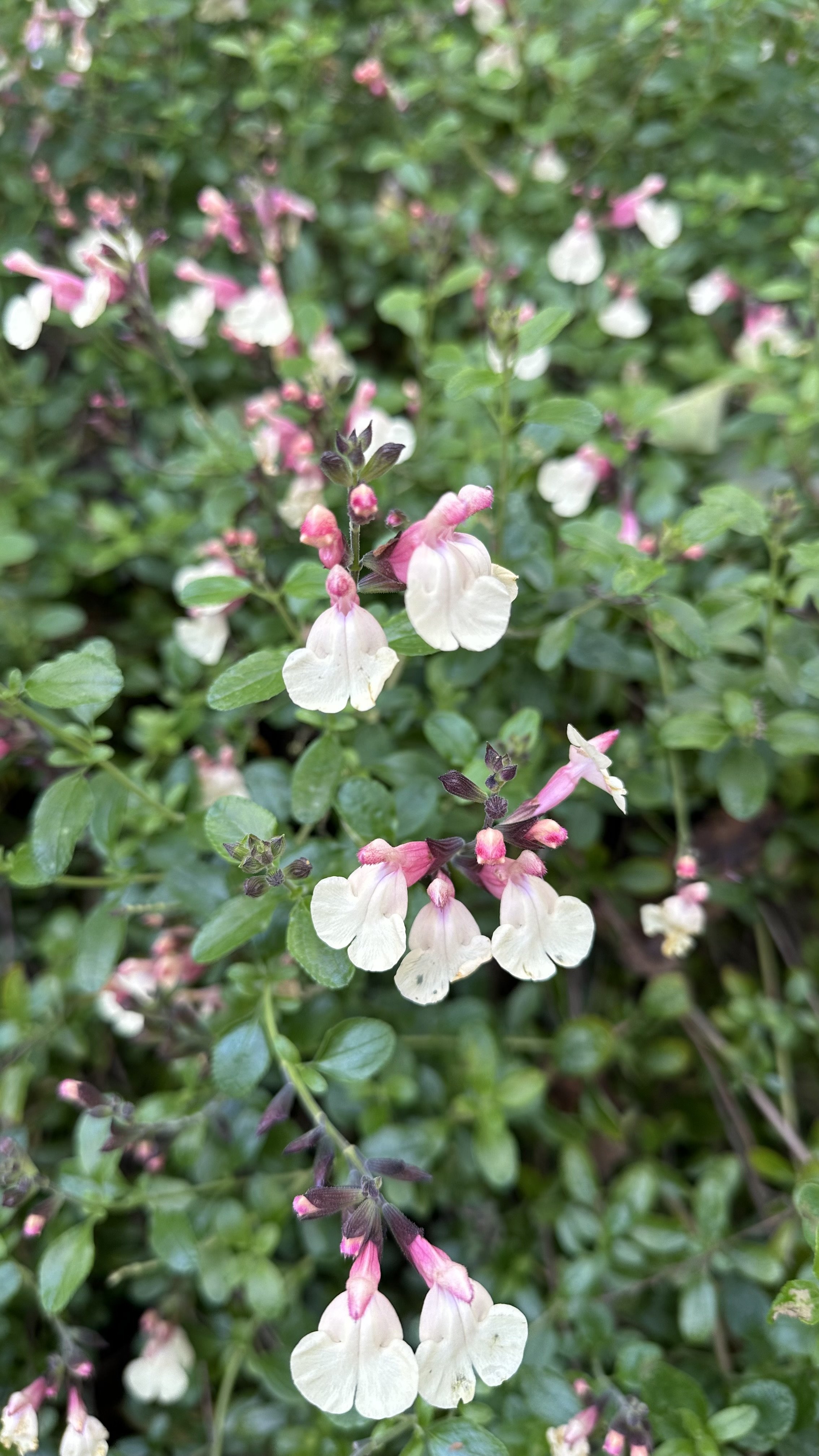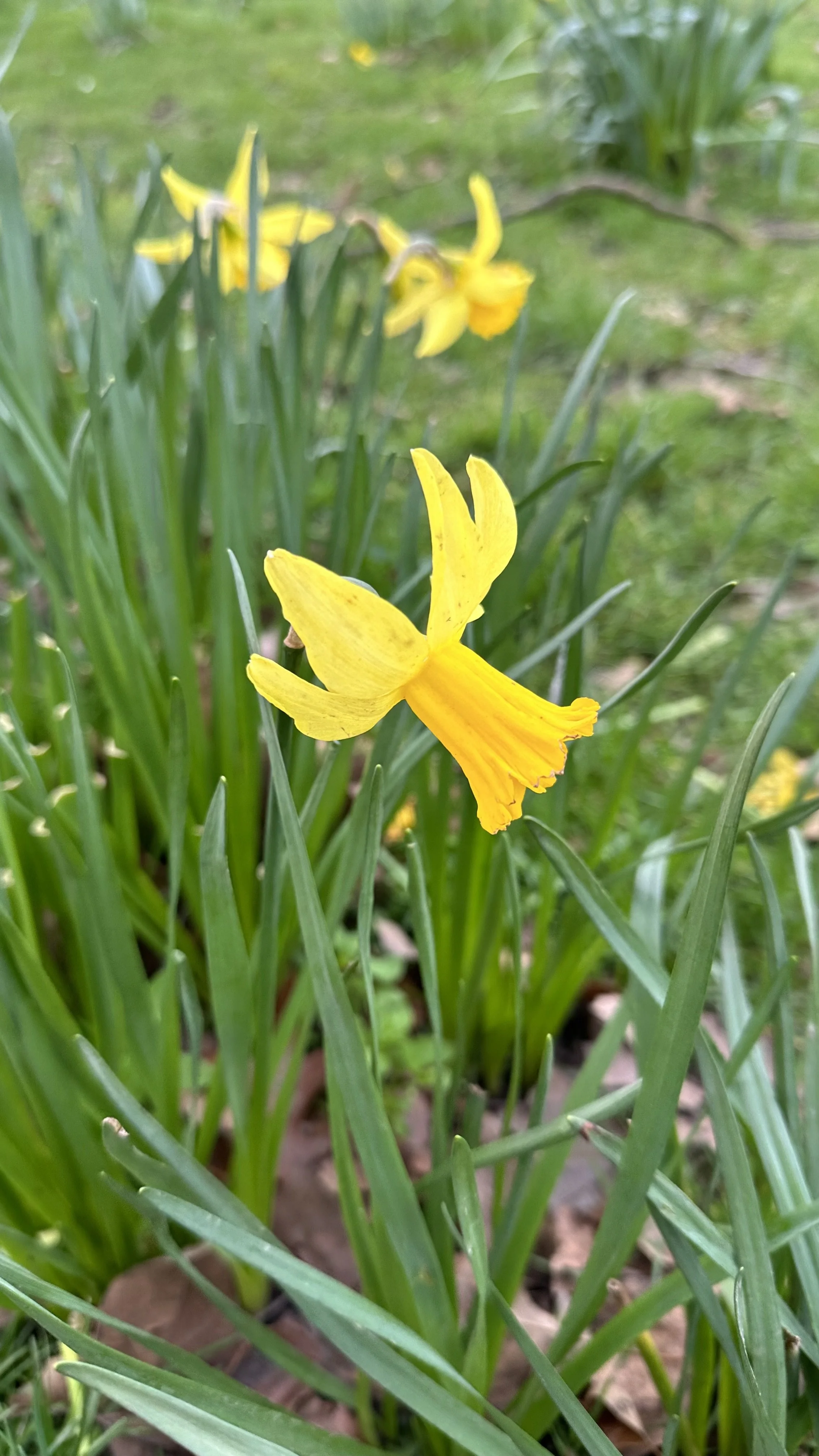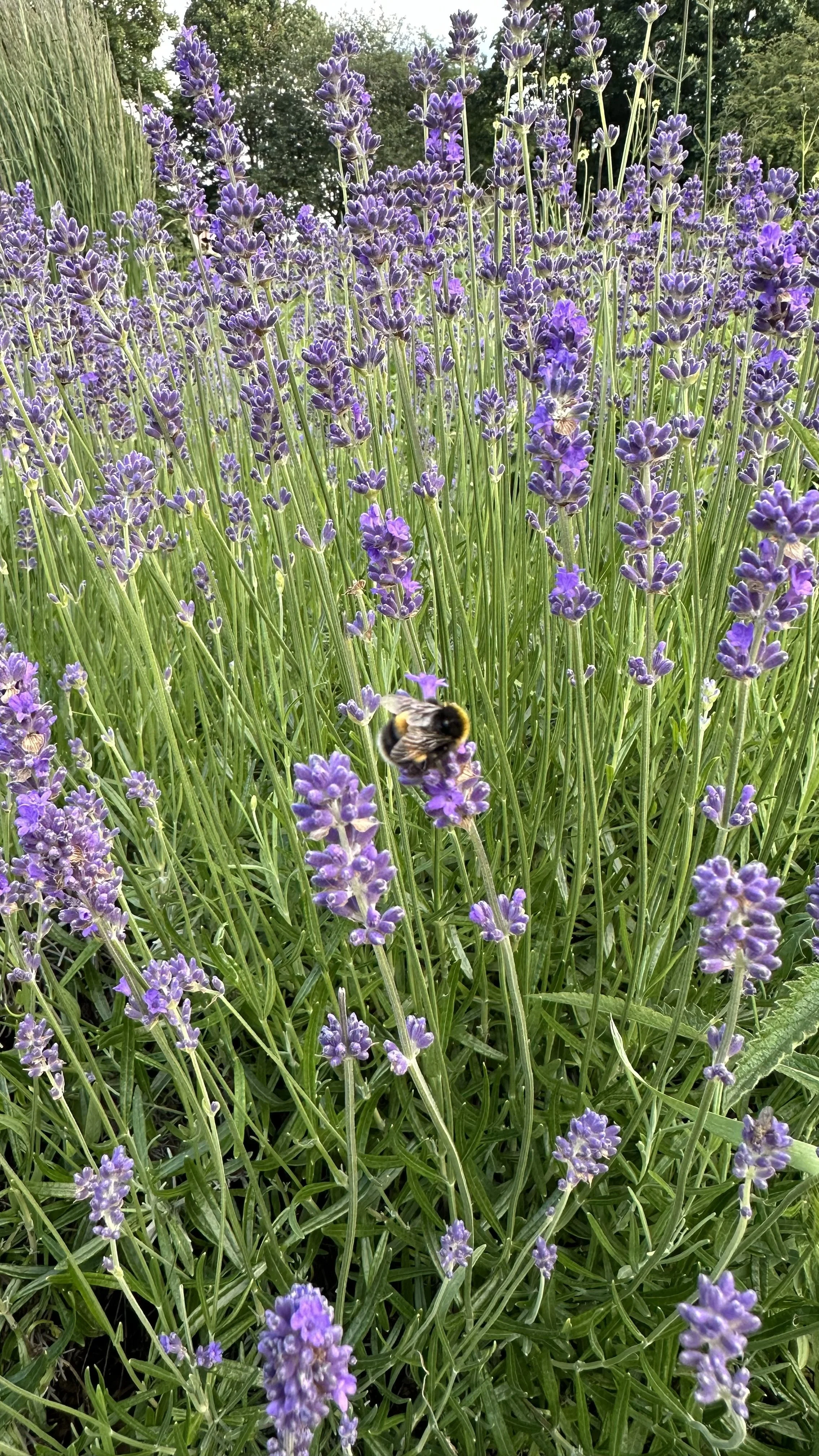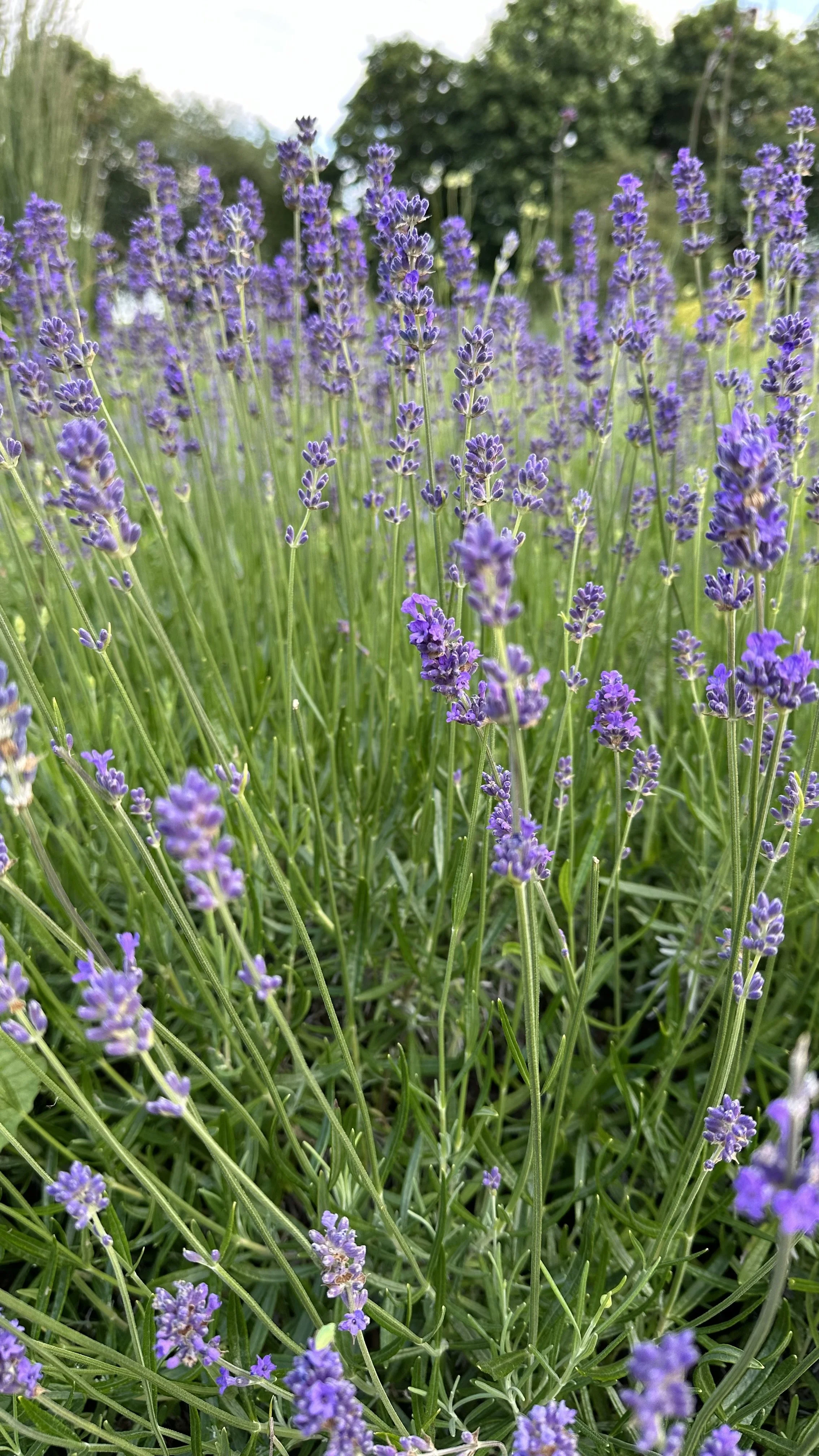Lavender Companion Plants: Enhancing Your Herb Garden
This article has links to products that I may make commission from.
Lavender, known for its amazing fragrance, charming purple flowers, and drought tolerance, is a beloved addition to any garden.
Yet, did you know that by choosing the right companions for your lavender, you can elevate not only the visual appeal but also the overall health and productivity of your garden?
In this guide, we delve into the world of companion planting with lavender, from understanding the mutual benefits of pairing certain plants together, to identifying which plants to avoid due to conflicting growing needs.
Whether you're looking to attract beneficial insects, want to add a vibrant pop of color to your garden, or are seeking low-maintenance plants that share lavender's love for full sun and well-drained soil, we've got you covered.
Through thoughtful planning and understanding each plant's unique needs, you can cultivate a garden that is not just visually stunning but also rich in biodiversity and ecological balance.
So, let's start our journey into the fragrant world of lavender and its best companions.
To learn more about growing lavender, check out my guides:
Lavender: A Full Sun, Drought-Tolerant Favorite
Lavender plants love full sun and prefer a well-drained soil.
Their drought tolerance and low maintenance nature make them an appealing choice for both beginners and seasoned gardeners.
Lavender thrives in summer, producing brilliantly purple flowers that serve as a vibrant ground cover.
Remember to ensure the soil is draining well, as lavender roots need access to water, but don't fare well in waterlogged conditions.
Full Sun Requirement:
Lavender thrives in full sun, which means it requires at least six hours of direct sunlight each day.
The abundance of sunlight allows it to photosynthesize effectively and produce the essential oils that give it its characteristic fragrance.
Too much shade can lead to leggy growth and fewer blooms, so it's important to plant lavender in a location where it won't be overshadowed by taller plants or structures.
Lavender blooms really well in west facing gardens and south facing gardens.
Drought Tolerance:
One of the most appealing aspects of lavender is its drought tolerance.
Originating from the Mediterranean, lavender is accustomed to dry, arid conditions with poor, rocky, or sandy soil.
This makes it an ideal plant for areas prone to drought or for gardeners aiming to conserve water.
Once established, lavender has a deep root system that enables it to withstand periods of drought better than many other plants.
Soil and Drainage:
While it's tolerant of poor soil, lavender does require well-drained soil to thrive.
Soggy, water-logged conditions can lead to root rot, which is often fatal for the plant.
If you have heavy clay soil, consider amending it with sand or small gravel, or plant lavender in raised beds or containers to improve drainage.
Care and Pruning:
Lavender is a relatively low-maintenance plant. Aside from ensuring it gets plenty of sun and isn't overwatered, the main task you'll have is pruning.
Prune lavender in early spring or at the end of summer after it blooms to encourage bushier growth and prevent it from becoming woody.
Here is my favorite pair of gardening shears for pruning:
Equip your urban garden space with my recommend top tier tools.
Choosing the Right Lavender Companion Plants
Lavender companion plants should ideally have similar growing needs - full sun exposure, good drainage, and drought tolerance.
Here are the right companion plants for lavender.
Rosemary:
Rosemary and lavender are often paired together in gardens because they have similar cultural needs.
Both plants are native to the Mediterranean, so they're accustomed to full sun, dry conditions, and well-drained soil.
They're both drought-tolerant and can thrive even in poor, rocky soil.
Moreover, rosemary's tall, upright growth habit can provide a nice contrast to lavender's mounding form.
From a pest control perspective, both rosemary and lavender have strong scents that can help deter pests.
Learn more about growing rosemary with my guide How to Propagate Rosemary: A Step-by-Step Guide.
Here is the rosemary I recommend growing:
Thyme:
Thyme is another Mediterranean herb that enjoys the same growing conditions as lavender: full sun and well-drained soil.
Thyme has a creeping growth habit, making it an excellent ground cover that can be planted at the base of taller lavender plants.
The combination of lavender's purple flowers and thyme's typically pink or white blooms can create a beautiful visual contrast.
Both plants are also useful in repelling certain pests, making them a strong duo in a pest-resistant garden.
Here is the thyme I recommend growing:
Sage:
Like rosemary and thyme, sage shares lavender's love for full sun and well-drained soil.
Both plants have similar water needs and are tolerant of drought, making them a good match in a low-maintenance or xeriscape garden.
Additionally, both lavender and sage have strong scents that can deter pests, and their different leaf textures and colors can create a visually appealing contrast in the garden.
Learn more about growing herbs in my guide Herbs That Can Be Planted Together: The Best Combinations.
Here is the sage I recommend growing:
Marigolds:
Marigolds and lavender make excellent companions because they both love full sun, well-drained soil, and have similar water requirements.
Additionally, marigolds are known for their ability to repel certain pests, including nematodes and some types of beetles.
Their bright, sunny flowers offer a beautiful contrast to the cool purple tones of lavender, adding visual interest to your garden.
Here are the marigold seeds I recommend planting:
Hardy Geraniums:
Geraniums are also a suitable choice as they share lavender's preference for full sun and well-draining soil.
Their lush foliage and vibrant flowers can create a lovely contrast with lavender's tall, slender stems and purple blooms.
Just bear in mind that geraniums might require a bit more moisture than lavender, so ensure neither plant is over or under-watered.
Here is the hardy geranium I recommend growing:
Russian Sage:
Russian sage pairs beautifully with lavender.
Both plants share similar needs: full sun, good drainage, and low water requirements.
With its tall, spiky appearance and blue-purple flowers, Russian sage can provide a delightful contrast in height and texture to lavender, especially in border plantings.
Here are the Russian sage seeds I recommend:
Lavender is also a natural cat repellant for your garden, learn more about this in my guide:
Plants That Deter Cats: A Natural Solution to Keep Cats at Bay
What To Plant with Lavender In A Border
For border planting, lavender pairs well with perennial evergreens.
The contrast between lavender's soft purple and the deep greens creates a dynamic visual boundary.
Ground cover species, like thyme, also work well, forming a lush carpet around the lavender.
Perennial Evergreens:
Perennial evergreens, such as junipers or boxwoods, can make good companions for lavender.
These evergreens can provide year-round structure and color in the garden, while lavender offers seasonal blooms and fragrance.
Furthermore, like lavender, many evergreens prefer full sun and well-drained soil.
The key is to choose evergreens that won't crowd the lavender or overshadow it, ensuring both types of plants have their own space to grow and thrive.
Ornamental Grasses:
Ornamental grasses, such as fountain grass or maiden grass, can provide an excellent backdrop for the striking purple blooms of lavender.
They share a love for full sun and well-drained soil.
Their varied textures and heights can add visual interest and movement to a garden, creating a lovely contrast with lavender's dense, mounded growth habit.
Other Flowering Perennials:
Consider pairing lavender with other flowering perennials that share similar growing conditions.
For instance, salvia, with its bright blue or purple flower spikes, pairs beautifully with lavender.
Another good companion is yarrow, which is a drought-tolerant plant that comes in a variety of colors including white, yellow, and pink.
Learn more about growing salvias in my guides Pruning Salvias: How to Prune for Abundant Flowers and Growing Vibrant Salvia in Pots.
My recommended salvia for planting:
Ground Covers:
Ground covers like creeping thyme or sedum are fantastic choices.
They can fill in spaces around the lavender without competing for resources.
Their low growth habit contrasts nicely with the height of lavender, and their ability to withstand full sun and well-drained soil aligns perfectly with lavender's requirements.
Bulbs:
Planting bulbs like daffodils and tulips around your lavender can create a surprising pop of color in the spring before your lavender hits its peak bloom time.
Tulips and daffodils prefer well-drained soil, just like lavender, and their vibrant spring blooms can give an early start to your garden's color show.
My recommended daffodil bulbs:
When choosing what to plant with lavender in a border, consider factors like color, height, texture, and bloom time.
And remember, all plants in the border should have similar sunlight and water needs to ensure a healthy and harmonious growth.
Want to learn more about companion planting? Check out my guides:
Lavender Companion Vegetables
Lavender's strong scent makes it an excellent companion for many vegetables.
This scent can help to repel harmful pests and attract beneficial insects, making it a valuable addition to a vegetable garden.
Here are some vegetables that can benefit from being planted near lavender:
Tomatoes:
Tomatoes and lavender can make for a good pairing.
The fragrance of lavender can help keep pests that commonly afflict tomatoes at bay.
However, tomatoes require more watering than lavender, so be sure to not overwater your lavender.
Learn more about growing tomatoes in our guide The Art of Harvesting Tomatoes: When and How to Pick the Perfect Fruit.
My recommended tomato seeds:
Leeks and onions:
Leeks and onions can also benefit from lavender's strong scent, which can deter pests like onion flies.
Plus, these plants all prefer well-drained soil, making them compatible in terms of soil requirements.
Learn more about growing onions in our guide Onion Companion Plants: Creating a Natural Ecosystem.
My recommended onion seeds:
Carrots:
Carrots, like other root vegetables, enjoy the well-drained soil that lavender requires.
Furthermore, the scent of lavender can help deter carrot flies, making lavender a beneficial companion for carrots.
Learn more about growing carrots in our guide When to Pick Carrots: The Comprehensive Guide.
My recommended carrot seeds:
Remember, when it comes to companion planting, it's crucial to take the plants' growing conditions into account.
Lavender thrives in full sun and well-drained soil, and doesn't like to be over-watered.
So, while it can provide great benefits for certain vegetables, it may not be the best companion for water-loving crops.
Also, be aware that while lavender can repel many pests, its strong scent and attractive flowers can sometimes attract deer and rabbits.
If these animals are common in your area, you may need to take additional measures to protect your garden.
Plants To Avoid Pairing With Lavender
While lavender makes a good companion for many plants due to its drought tolerance, ability to attract beneficial insects, and its pest-repelling properties, there are a few plants you should avoid pairing with lavender due to their different cultural needs.
1. Water-loving plants:
Lavender prefers dry, well-drained soil and doesn't tolerate water-logged conditions or over-watering.
Therefore, it doesn't pair well with plants that prefer moist or wet soil.
Plants such as ferns, hostas, and many varieties of hydrangeas that thrive in consistently moist soil should not be planted with lavender.
2. Shade-loving plants:
Lavender needs full sun to flourish, which means it requires at least six hours of direct sunlight per day.
Shade-loving plants like impatiens, violets, and polyanthus will not thrive in the same areas as lavender.
3. Plants that need rich soil:
Lavender thrives in poor to moderately fertile soil.
Therefore, plants that require rich, nutrient-dense soil may not do well when planted with lavender.
This includes many types of vegetables and fruits.
4. Plants prone to fungal diseases:
Lavender's dense growth habit can sometimes create a microclimate that retains moisture, which can encourage the development of fungal diseases.
Avoid planting lavender with plants prone to fungal diseases, such as phlox and zinnias.
5. Invasive plants:
Avoid planting lavender near invasive plants that might overtake it.
For instance, mint, while a good companion in terms of growth requirements, can quickly spread and may crowd out the lavender.
For more tips on growing mint, check out my guide Mint to Be Together: Choosing Companion Plants for Mint.
Lavender Companion Planting Guide
When planning a garden that includes lavender and its companions, consider the following:
1. Understand Your Lavender's Needs:
Lavender requires full sun, which means at least six hours of direct sunlight each day.
It thrives in well-drained, slightly alkaline soil with a pH between 6.7 and 7.3.
Lavender prefers poor to moderately fertile soil and doesn't tolerate overly moist or waterlogged conditions.
2. Choose the Right Companions:
As we've discussed earlier, there are numerous options when it comes to lavender companion plants.
These include herbs like rosemary, thyme, and sage, flowers like marigolds, and certain vegetables like cabbages and tomatoes.
All these plants share similar growing conditions with lavender and can benefit from its pest-repelling properties.
3. Consider the Companion Plant's Needs:
While the potential companion plants share some common needs with lavender, they might have other specific needs you should consider.
For instance, while rosemary enjoys similar sunlight and soil conditions, it might require more frequent watering than lavender.
For more watering tips, check out my guide How to Use Watering Globes.
4. Plan Your Garden Layout:
Ensure that all the plants have enough space to grow without competing for resources.
Lavender plants can grow quite large, up to 1-3 feet in both height and spread. Consider this when spacing your plants.
If you're using lavender as a border, remember to plant taller companions behind and shorter ones in front to create a tiered effect.
5. Planting:
Dig a hole that is the same depth as the root ball of your lavender plant and twice as wide. If your soil is heavy clay or drains poorly, consider amending it with coarse sand or gravel to improve drainage.
After planting, water thoroughly, but then allow the soil to dry out between waterings.
6. Care and Maintenance:
Once established, lavender is relatively low-maintenance.
Prune in early spring to encourage bushier growth, and deadhead spent flowers to encourage continuous blooming throughout the summer.
FAQs
Can you plant lavender and marigolds together?
Yes, you can plant lavender and marigolds together.
Both plants love full sun and have fairly similar water needs.
The vibrant orange or yellow flowers of marigolds can provide a beautiful contrast to lavender's purple blooms.
Additionally, both plants are known for their ability to repel certain pests, making them good companions in a pest-resistant garden.
Can you plant lavender and geraniums together?
Yes, lavender and geraniums can make good companion plants.
They both thrive in full sun and well-drained soil. Geraniums add variety in color and form to the garden and can handle the same dry conditions that lavender prefers.
However, geraniums might need a bit more moisture than lavender, so it's essential to ensure neither plant is over or under-watered.
Wrap-Up
Designing a lavender garden is a journey that brings together the beautiful aesthetics and practical benefits of this unique plant.
Lavender, with its fragrant brightly colored flowers and silver-green foliage, is more than just a pretty plant in the garden.
Its powerful scent serves a dual purpose: attracting beneficial pollinators and helping to repel pests that can threaten the health of other plants.
When selecting companions for lavender, keep in mind their shared love for full sun, well-draining soil, and similar watering needs.
The ideal lavender companion plants are those that can thrive in the same poor to moderately fertile, well-drained soil that lavender loves.
Moreover, remember that lavender is a hero when it comes to being drought tolerant.
This characteristic makes it a superb choice for gardeners looking to conserve water or those living in dry, arid regions.
The diverse range of herbs, flowers, and certain vegetables that pair well with lavender increases the biodiversity of your garden, contributing to a more robust and resilient ecosystem.
By thoughtfully selecting companion plants for your lavender, you can create a dynamic, healthy, and beautiful garden.
This holistic approach to gardening—where every plant has a purpose and contributes to the overall harmony of the space—is what makes gardening with lavender so rewarding.
